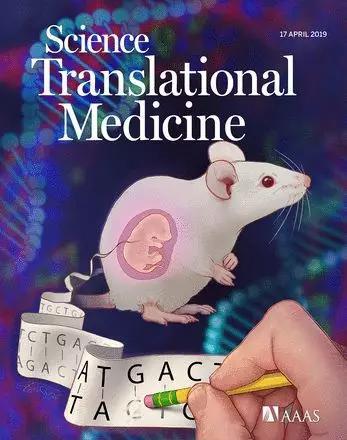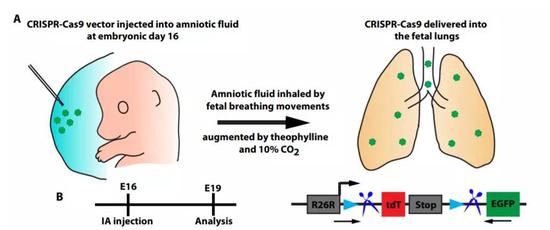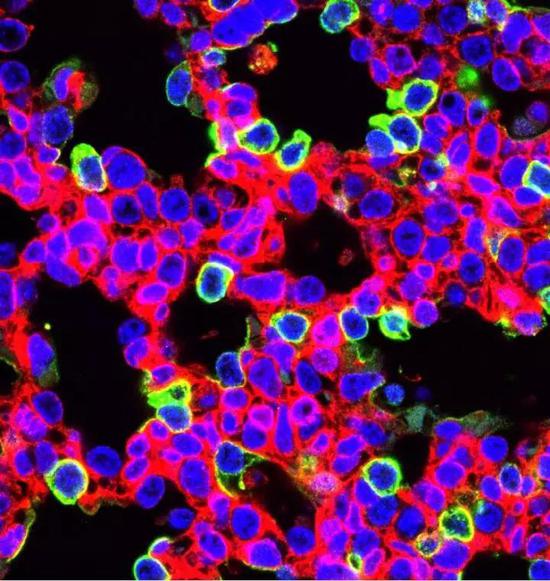This week, the cover paper for the latest issue of Science, Science Translational Medicine, tells us about a recent advance in gene therapy – a team from the University of Pennsylvania School of Medicine and the Children's Hospital of Philadelphia successfully repaired the small A deadly genetic mutation in the mouse. Surprisingly, these mice have not even been born when repairing mutations!

â–²This study is on the cover of the latest issue of Science Translational Medicine (Source: EO TRUEBLOOD/THE CHILDREN'S HOSPITAL OF PHILADELPHIA)
Specifically, the researchers are targeting a congenital genetic disease, surfactant protein deficiency. As a type of lipoprotein, surface active proteins can reduce the tension on the surface of the lungs and play an important role in the normal function of the lungs. However, in some rare cases, genetic mutations occur in the baby, causing defects in the surface active protein. In the mother, the baby can still get oxygen through the placenta. However, after birth, children who need spontaneous breathing often have respiratory failure within a few hours due to insufficient lung function, leading to death. At the moment, we have little to do with this disease. To save the lives of these babies, we must correct the deadly genetic mutations in the embryos before they are born.
This study examined the feasibility of "embryonic gene therapy." “We want to know if this strategy is feasible,†said Edward E, a professor at the University of Pennsylvania School of Medicine, one of the heads of the study. Morrisey said: "The key here is how to direct the gene editing system to target cells in the respiratory tract and lungs."

â–² Schematic diagram of this genetic editing system (Source: Reference [1])
To this end, the research team developed a CRISPR gene editing fluorescence reporting system for testing. In the mouse model, they first injected this system into the amniotic fluid of the third trimester of the mother. It is envisaged that as the embryo moves, these systems can also enter the respiratory tract and lungs of the mouse embryo to be formed for genetic editing. And if the gene editing is successful, we can observe fluorescence at these sites.
They have succeeded. Under the microscope, the researchers clearly saw that the gene editing brought green fluorescence, indicating that the system can indeed genetically edit the embryo in the womb. Even more gratifying is that these genetic editing results seem to be long-term. Specifically, many of the cells that have been genetically edited belong to type 2 alveolar cells, which are the key cells that produce surface active proteins.

â–²The researchers saw green fluorescence in the lungs that predicted the successful editing of the gene (Source: Penn Medicine)
After the initial framework of the technology was completed, the researchers decided to test their ability to repair mouse gene mutations. They used a special mouse model with a mutated SFTPC gene (which causes abnormalities in surface active proteins) and a normal wild-type SFTPC gene. Subsequently, these mouse embryos were divided into 3 groups, one group did not receive any treatment, one group received control gene editing (only expresses green fluorescent protein), and the other group expressed green fluorescent protein while allowing mutation. The SFTPC gene is inactivated. Researchers hope that through this genetic editing, mouse embryos will no longer produce abnormal surface active proteins, thereby reshaping the physiological form of the lungs and restoring them to health.
The study found that mouse embryos that did not receive treatment or were only treated with control were all killed after 6 hours of birth. In the mouse embryos that received the gene editing treatment, 8% of the young rats survived after 24 hours. On the seventh day after birth, the overall survival rate was still 5.7%. Since these mice were subsequently used for anatomical analysis of the lungs, the researchers did not obtain longer-term survival data. However, from the perspective of the lung structure, the morphology has also been improved.

â–²Compared with controls (green and purple), the survival rate of mice treated with gene editing (red) improved (Source: Reference [1])
“It is exciting to be able to cure or alleviate the disease before the emergence of irreversible pathological symptoms through gene editing techniques in the middle to late stages of pregnancy!†Another person in charge of the study, Philadelphia Children William H of the hospital. Professor Peranteau said: "This is especially true for lung diseases. Pulmonary function plays a more important role at birth."
Some commentators pointed out that this study is expected to avoid the ethical controversy of genetic editing of embryos - in mouse experiments, the time of gene editing is 4 days before birth, equivalent to 28 weeks after human pregnancy. At this time, the fetus can be regarded as a relatively premature baby, thus avoiding a series of problems caused by editing human embryos. In addition, this gene editing theory does not change germ cells.
But the researchers also pointed out that while avoiding some important ethical controversies, it also brings some new risks. For example, genetic editing of an individual after birth will at least not affect the mother. The potential impact on the mother during genetic editing during pregnancy is unknown. In addition, in another set of controls, wild-type mice that received genetic editing had a survival rate of only 25% 7 days after birth, which may limit its use.
In summary, this study is a good attempt for gene editing therapy and conceptually validates the feasibility of genetic editing of embryos during pregnancy. This may open a new window of treatment for fetuses with fatal congenital genetic diseases. Of course, we still have a long way to go from mouse experiments to the final application to the human body.
Source: Academic Jingwei
Anesthesia products is a collective name for medical devices used in the anesthesia field, such as Endotracheal Tube, Laryngeal Mask Airway, Closed Suction Catheter, nasopharyngeal Airway , guedel airway, etc which will used to establish an open airway when the patients are in an unconscious situation who cannot breath on their own.
Anesthesia consumables,Disposable anesthesia products,Anesthetic products,Anesthetic device
2 MEDS TECHONOLOGY CO.,LTD , https://www.2-meds.com